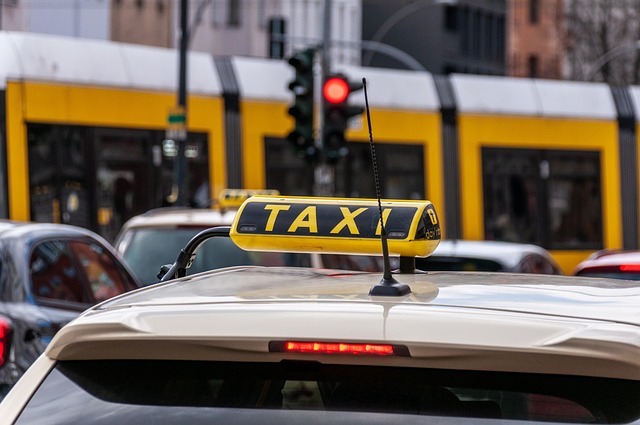Looking to register your car in California? This comprehensive guide walks you through every step, from understanding essential requirements to completing a crucial dmv VIN verification process. We’ll show you how to gather all necessary documents and navigate the application process seamlessly. By following these clear instructions, you’ll be driving with a registered vehicle in no time.
- Understand Requirements for Car Registration in California
- Gather Necessary Documents for Vehicle Registration
- Perform DMV VIN Verification Process Step-by-Step
- Submit Application and Pay Registration Fees
- Receive Confirmation and Register Your Vehicle
Understand Requirements for Car Registration in California

Before registering your car in California, it’s crucial to understand the requirements set by the Department of Motor Vehicles (DMV). This process involves several key steps, including a thorough vehicle inspection and verification of your car’s unique Vehicle Identification Number (VIN). The DMV conducts a VIN verification to ensure that the vehicle matches the information on the title and registration documents. This helps in preventing fraud and ensuring safety standards.
Additionally, you can opt for a convenient alternative by utilizing a mobile vin inspection or a mobile vin verifier service. These services allow you to complete the initial VIN verification process remotely, potentially saving time and effort. By understanding these requirements and considering options like mobile vin verification, you can streamline the car registration process in California.
Gather Necessary Documents for Vehicle Registration

Before you begin the registration process, ensure you have all the required documents for a smooth transaction at the California Department of Motor Vehicles (DMV). The key document is the Vehicle Identification Number (VIN) verification report, which can be obtained through a mobile vin verifier or by conducting a vin inspection. This report confirms your vehicle’s history and authenticity.
Gathering these documents is essential, as it helps to avoid delays at the DMV. Other necessary paperwork includes proof of ownership, such as a title or purchase agreement, a valid driver’s license, and proof of insurance. It’s recommended to check the specific requirements on the official DMV website, as some cases may have additional documentation needs.
Perform DMV VIN Verification Process Step-by-Step

To start the DMV VIN verification process, gather all necessary documents before heading to your nearest California DMV office. This includes the completed Vehicle Registration Application, proof of insurance, and your car’s title. Next, identify your vehicle using the unique 17-character Vehicle Identification Number (VIN). You can locate this number on the driver’s side of the dashboard or in the door jamb.
Once at the DMV, approach the counter and inform the attendant that you need to perform a VIN verification. They will guide you through the process, which involves entering your VIN into their system. The attendant may also conduct a visual inspection of your vehicle to ensure it matches the details registered on the VIN. For added convenience, consider opting for a mobile vin verification or mobile vin inspection service, allowing you to complete this step quickly and efficiently without visiting the DMV in person.
Submit Application and Pay Registration Fees

After completing your vehicle’s inspection, it’s time to submit your application and pay the registration fees. You’ll need to fill out a California Vehicle Registration Application (Form DV-180), which can be done online or in person at a DMV field office. Make sure to include all required documents, such as proof of insurance, proof of identity, and the vehicle’s title.
Along with your application, you’ll need to pay the appropriate registration fees. These fees vary based on the type of vehicle and its age. You can typically pay using a credit card, debit card, or check. For added convenience, consider utilizing a mobile vin verification service to ensure a smoother process. Some services even offer mobile vin inspection options, allowing you to complete these steps from the comfort of your home.
Receive Confirmation and Register Your Vehicle

After completing the necessary paperwork and providing the required documents, it’s time to receive confirmation from the DMV. This step involves verifying the vehicle identification number (VIN) to ensure accuracy. You can opt for a mobile vin inspection or use a mobile vin verifier to streamline this process. A mobile vin verification service will check the VIN against the manufacturer’s records and provide real-time data, including vehicle history and any outstanding issues. Once confirmed, you’ll receive your registration documents in the mail within a specified timeframe.
Remember to keep these documents secure as they are essential for maintaining proper ownership records. California’s DMV offers efficient online services that allow you to manage your vehicle registration easily. By utilizing mobile vin verification tools, you can ensure a faster and more convenient car registration process.
Registering a car in California involves understanding the state’s requirements, gathering essential documents, and successfully completing the DMV VIN verification process. By following these steps, from application submission to fee payment and final confirmation, you’ll ensure your vehicle is legally registered and ready for California roads. Remember, proper registration not only complies with legal obligations but also demonstrates responsible ownership. Now that you’re armed with knowledge, take a dive into the process and get your vehicle registered smoothly and efficiently.
